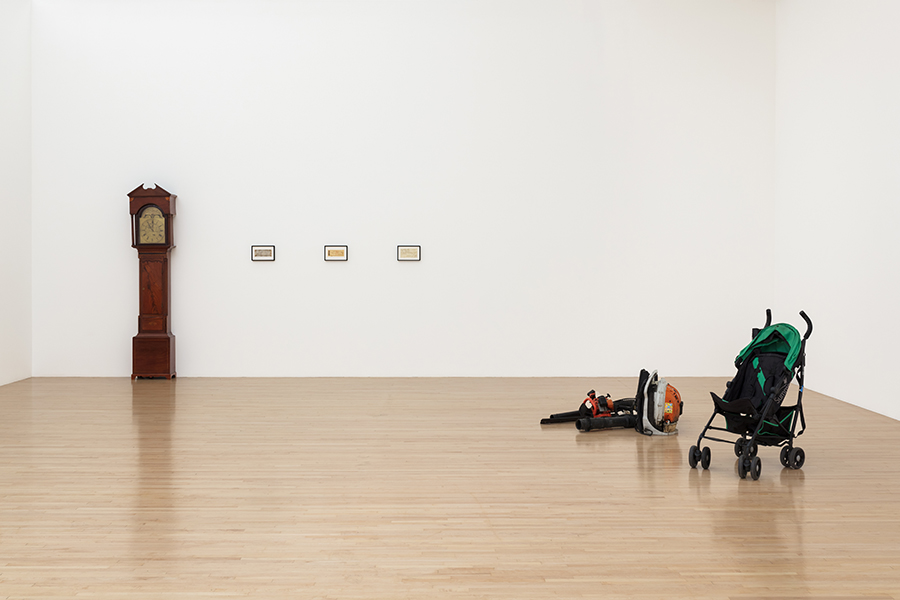
On Tuesday, Oct. 15, Wesleyan’s Ring Family Performing Arts Hall welcomed back Cameron Rowland ’11, a conceptual artist based in New York City. Rowland’s work sheds light on the institutions and policies that perpetuate systemic racism and economic inequality.
Rowland is one of the 2019 MacArthur fellows and has had work shown in institutions including the Museum of Modern Art, the Whitney Museum of American Art, and the Museum of Contemporary Art of Los Angeles.
Conceptual art deals with the question of what art actually is, exploring the border between what can be considered art and what cannot. Fascinated by the question of how easy it is to call something a piece of art, Rowland participates in this exploration by taking objects that were intended for practical application and using them in a way that gives them a whole new purpose and identity.
Rowland’s talk revolved around his 2018 work, titled “Depreciation,” reflecting on the legal-economic regime of property in the United States as one that was founded on slavery and colonization. The idea that the origins of property rights in the country can be traced back to racial domination and slavery, is central to the understanding of this work.
“Slaves were considered property,” Rowland read. “And the law protected them only as a property interest of their owner.”
Rowland then refers to the basis of world trade in the slave trade by using the term “racial capitalism,” which he believes is not merely a type of capitalism, but rather sustains all of capitalism. He also seeks to look into the problem of life reparations, the question of how to compensate for the horrors lived through by former slaves.
“My own interest in reparations stems in legally and historically dominated constructions of time and property,” he said.
Is it possible to fully repair or entirely compensate for the past, Rowland wondered. The argument here was that reparation is more of an unending attempt rather than a complete resolution.
“Depreciation” is presented through a set of documents that records the purchase of one acre of land on Edisto Island, S.C. According to the piece’s caption, the site draws its significance from General William Sherman’s promise of “40 acres and a mule” to freed slaves in 1865. This promise was an important but brief episode in the history of reparations—Sherman’s proposition was reversed by Vice President Andrew Johnson after Lincoln was assassinated. Johnson ordered the return of lands to dispossessed Confederate owners, leaving most former slaves no choice but to enter the sharecropping system or else be arrested, dispossessing them of both land and freedom.
The parcel of land that Rowland purchased was once part of the Maxcy Plantation on Edisto Island, where former slaves worked. An Appraisal Report (on display) valued the land at zero dollars—literally nothing.
“Can we imagine the existence of a piece of land that isn’t a part of the real estate market?” Rowland asked.
Pictures of an overgrown wooded lot, as well as photos of property boundaries and satellite images of the site, create a break in the text. With its long caption, the work becomes saturated with historical details, guiding visitors through the exhibition’s ambitious examination of the ways in which dispossession linked to race has historically been a fundamental component of property relations. The work itself is perhaps more of a spatial construct, a series of transactions, and as such is not restricted to the exhibition room. Rowland stated during the talk that his artwork exists in different spaces—the exhibition space, the County register, and even the lot itself.
A recurring question after the talk was how to reconcile the fact that the artwork itself has value, while it is essentially representing the extreme devaluation of property. “Depreciation” is property and as such has value, yet Rowland explained that his artwork has a special mode of transfer and as such can only be transferred to an institution, not to an individual. The framed documents also exist as a PDF document, so the physical aspect of the work is not the only form that holds value—“Depreciation” is valuable mostly in what is represents.
With “Depreciation,” Rowland examines capitalism through the prisms of resource extraction, property, and the attribution of value to land, leading us to ask ourselves if it is possible to conceive of the existence of reparations outside of the inherently racist systems of property and wealth.
Claire Femano can be reached at cfemano@wesleyan.edu.


Leave a Reply